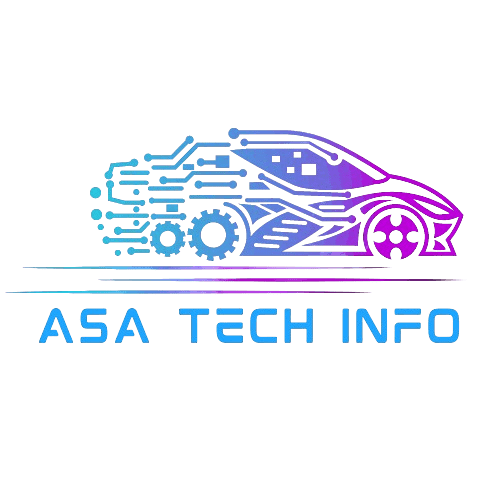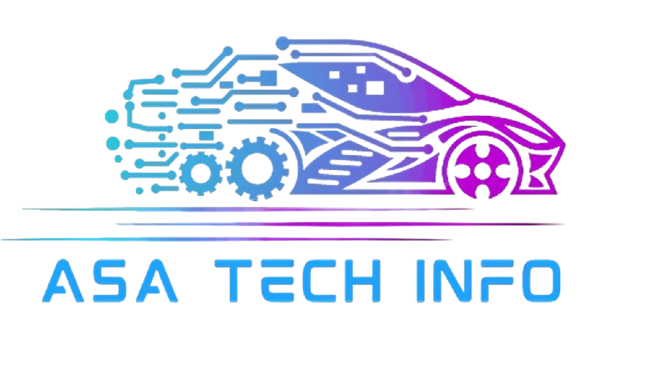1. Introduction to Flying Cars
1.1 What Are Flying Cars?
“Flying cars” represent a revolutionary shift in personal transportation, merging the capabilities of automobiles and aircraft. Unlike traditional vehicles confined to roads, or drones primarily designed for specific tasks, flying cars in 2025 are envisioned as dual-mode vehicles capable of both driving on roads and taking to the skies. They are designed to offer a seamless transition between ground and air travel, typically through vertical takeoff and landing (VTOL) capabilities. Current prototypes and models range from winged vehicles resembling small planes that can fold their wings to drive, to multi-rotor designs that look like enlarged drones.
1.2 Historical Development of Flying Cars
The dream of flying cars has captivated imaginations for over a century. Early concepts surfaced in the early 20th century, with inventors like Glenn Curtiss unveiling the Autoplane in 1917, considered by many as the first serious attempt. Throughout the 20th century, numerous designs emerged, like the Moulton Taylor’s Aerocar, though none achieved commercial success. These efforts were often hindered by technological limitations and regulatory hurdles. Key milestones in aviation, such as the development of jet engines and advances in lightweight materials, paved the way. However, the true transition from mere fantasy to a tangible reality has gained significant momentum in recent years, driven by advancements in electric propulsion, autonomous technology, and materials science.
1.3 The Vision for 2025
The year 2025 is increasingly viewed as a pivotal point for the flying car industry. Current projections suggest that by then, the first wave of commercially available flying cars might be entering the market, albeit likely in a limited capacity. The anticipated impact of this technology on personal transportation is profound. It promises to revolutionize commuting, offering faster, more efficient travel, especially in congested urban areas. However, widespread adoption faces numerous challenges, including technological hurdles, regulatory complexities, infrastructure development, and public acceptance. The opportunities are equally significant, with the potential to reshape cities, create new industries, and redefine the very concept of mobility.
2. The Technology Behind Flying Cars
2.1 Propulsion Systems
A critical element driving the feasibility of flying cars in 2025 is the evolution of propulsion systems. Electric propulsion is emerging as the dominant choice, favored for its environmental benefits, reduced noise levels, and potential for simpler mechanical design. Innovations in battery technology are crucial, focusing on increasing energy density to provide longer ranges and shorter charging times. Hybrid systems, combining electric motors with traditional combustion engines, offer a transitional approach, balancing range and power. Alternative propulsion technologies, like advanced jet engines and efficient rotor systems, are also under development, catering to specific design needs and performance requirements.
2.2 Navigation and Safety Systems
Autonomous flight technology is at the heart of making flying cars safe and accessible. By 2025, it is expected that flying cars will feature sophisticated navigation systems capable of autonomous or semi-autonomous flight, reducing the need for extensive pilot training. The integration of these vehicles into the existing airspace requires a new paradigm for air traffic control. This involves creating dedicated air corridors, utilizing advanced communication systems, and implementing real-time tracking and management protocols to ensure safe separation between aircraft. Safety mechanisms, such as redundant systems, emergency landing protocols, and ballistic parachutes, are being developed and rigorously tested to mitigate risks.
2.3 Design and Aerodynamics
The design of flying cars in 2025 represents a complex engineering challenge, requiring vehicles that function effectively both on the ground and in the air. Aerodynamic considerations are paramount to ensure stable and efficient flight. Engineers are exploring various configurations, including tilt-wing, tilt-rotor, and multi-rotor designs, each with its own advantages and trade-offs. The materials used in construction play a vital role, balancing the need for lightweight structures with strength and durability. Advanced composites, like carbon fiber, are increasingly favored. Moreover, designers are striving to optimize weight, stability, and efficiency, ensuring that these vehicles can seamlessly integrate into existing transportation infrastructure while offering a safe and comfortable experience.
3. Regulatory Landscape
3.1 Government Policies and Regulations
The successful deployment of flying cars in 2025 hinges on a supportive and adaptable regulatory environment. Currently, aviation authorities worldwide are working to establish frameworks for urban air mobility. In the United States, the Federal Aviation Administration (FAA) is playing a leading role, collaborating with industry stakeholders to develop regulations that address the unique challenges posed by flying cars. Similar bodies in Europe, Asia, and other regions are also actively involved. International cooperation is essential to ensure harmonization of standards and facilitate cross-border operations. The focus is on creating rules that ensure safety without stifling innovation.
3.2 Urban Air Mobility Framework
Urban Air Mobility (UAM) is a key concept underpinning the future of flying cars. It envisions a network of air transportation services within and around cities, leveraging vertical takeoff and landing (VTOL) aircraft. By 2025, the development of a robust UAM framework will be crucial. This includes defining air corridors, establishing vertiports (takeoff and landing facilities), and integrating flying cars into the broader transportation ecosystem. Urban planning will need to adapt to accommodate this new mode of transport, considering factors like noise pollution, visual impact, and ground infrastructure requirements. The success of UAM will depend on close collaboration between city governments, aviation authorities, and industry players.
3.3 Permitting and Certification Processes
Before flying cars in 2025 can take to the skies commercially, manufacturers must navigate a complex permitting and certification process. This involves demonstrating the airworthiness of their vehicles through rigorous testing and adherence to stringent safety standards. The FAA and other regulatory bodies are developing specific certification pathways for VTOL aircraft, addressing aspects like design, performance, and operational safety. Pilot licensing and training requirements are also being established, potentially creating new categories of pilot certifications tailored to flying cars. Ongoing compliance and monitoring will be essential to ensure that these vehicles maintain their safety and airworthiness standards over time.
4. Societal Impact of Flying Cars
4.1 Effects on Urban Transportation
The introduction of flying cars in 2025 has the potential to transform urban transportation dramatically. By adding a third dimension to commuting, they could significantly alleviate traffic congestion, particularly during peak hours. This could lead to shorter travel times, reduced fuel consumption, and lower emissions in urban centers. However, integrating flying cars into existing public transport systems will be crucial to ensure equitable access and avoid exacerbating social inequalities. This might involve creating multimodal transportation hubs where commuters can seamlessly switch between flying cars, trains, buses, and other modes of transport.
4.2 Economic Implications
The emergence of a flying car industry promises significant economic ramifications. It is expected to create numerous jobs in areas such as manufacturing, software development, maintenance, and operations. This could stimulate economic growth and foster innovation across related sectors. However, the impact on the traditional automotive and aviation industries is uncertain. While some companies may successfully adapt and participate in the new market, others might face challenges. The cost of flying cars will initially be high, potentially limiting their accessibility to affluent individuals or businesses. However, as technology matures and production scales up, prices are expected to decrease, making them more accessible to a wider market.
4.3 Public Perception and Acceptance
Public perception and acceptance are critical factors that will determine the success of flying cars in 2025. Currently, attitudes towards this technology are mixed. While some people are enthusiastic about the prospect of faster and more convenient travel, others express concerns about safety, noise, and privacy. Risk perception and trust in autonomous technology will play a significant role in shaping public opinion. Strategies for increasing acceptance and adoption will need to address these concerns through public education campaigns, transparent communication about safety measures, and demonstrable real-world benefits. Building public trust will be an ongoing process, requiring collaboration between industry, regulators, and community stakeholders.
5. The Future Outlook
5.1 Trends and Predictions
Looking beyond 2025, experts predict that the flying car industry will continue to evolve rapidly. Emerging technologies, such as artificial intelligence, advanced sensor systems, and improved battery technology, are likely to further enhance the capabilities and safety of flying cars. Global trends in transportation, including a growing emphasis on sustainability and urban mobility solutions, will create a favorable environment for the adoption of this technology. As urban populations continue to grow, the demand for efficient and innovative transportation solutions will only intensify.
5.2 Challenges to Overcome
Despite the optimistic outlook, significant challenges remain. Technical hurdles, such as achieving sufficient range, reducing noise levels, and ensuring reliable autonomous flight in all weather conditions, must be addressed. Regulatory and legislative barriers need to be overcome to create a clear and consistent framework for the operation of flying cars. Public education and addressing safety concerns will be crucial to fostering widespread acceptance. Moreover, the development of necessary infrastructure, including vertiports and air traffic management systems, will require substantial investment and planning.
5.3 Final Thoughts on the Vision of 2025
The vision of flying cars in 2025 represents a significant leap forward in the pursuit of innovative mobility solutions. It highlights the role of technological advancements in shaping the future of transportation. While the initial deployment may be limited, it will lay the foundation for a potentially transformative shift in how we move within and between cities. Key developments to watch include advancements in battery technology, the evolution of autonomous flight systems, and the establishment of regulatory frameworks. Imagining everyday life with flying cars evokes a sense of excitement and possibility, hinting at a future where the skies are no longer the exclusive domain of traditional aircraft.
Conclusion
The potential of flying cars by 2025 is undeniable. While challenges remain, the convergence of technology, regulation, and public perception is creating a pathway for this revolutionary mode of transportation to become a reality. The interplay of these factors will determine the pace and scale of adoption. Ultimately, flying cars have the potential to be truly transformative, reshaping our cities, our commutes, and our relationship with the skies above. As we approach 2025, the world will be watching closely to see if this bold vision will take flight.
FAQs
What are flying cars and how do they differ from drones?
Flying cars are vehicles designed for both road travel and flight, typically using VTOL capabilities. Unlike drones, they are intended for personal transportation and are designed to carry passengers. Drones are often used for specific tasks like aerial photography or delivery and may or may not carry passengers.
How safe are flying cars expected to be in 2025?
Safety is a paramount concern. Flying cars in 2025 are expected to incorporate multiple safety features, including redundant systems, autonomous navigation, and emergency protocols. However, the actual safety record will depend on the maturity of the technology and the effectiveness of the regulatory framework.
What regulatory measures are being implemented for flying cars?
Aviation authorities like the FAA are developing new regulations specifically for flying cars, covering areas such as airworthiness certification, pilot licensing, and air traffic management. These measures aim to ensure safe operation and integration into existing airspace.
How will flying cars affect traffic in urban areas?
Flying cars have the potential to significantly reduce traffic congestion by utilizing airspace. However, their impact will depend on factors like adoption rates, infrastructure development, and integration with other modes of transport.
When can consumers expect to buy personal flying vehicles?
While some companies aim to launch limited commercial operations by 2025, widespread availability of personal flying cars for consumers is likely to be several years further out. Initial models are expected to be expensive, but prices may decrease as the technology matures and production scales up.


















